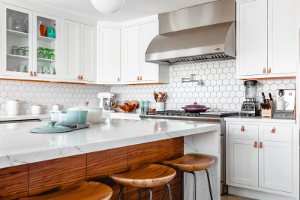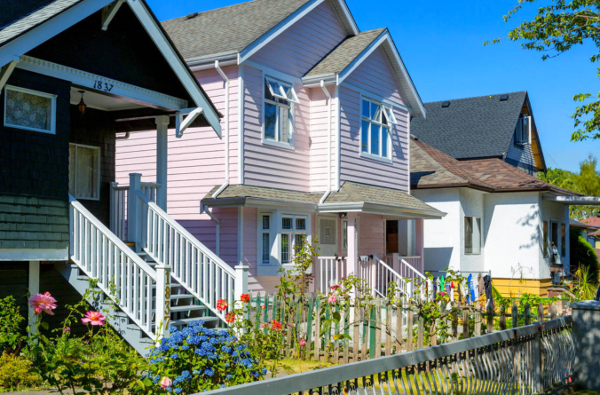Try a local home exchange as a low-risk way to test the waters, before moving to a new city or town.
By Kate Robertson
House swapping has been around since at least the early 1950s, when David Ostroff, a New York City teacher, is credited with opening his home exchange service, now called Home Link Canada, has been operating since 1986, says its current director, Jack Graber. Today, the largest user demographic is retirees, many of them former professionals–and avid repeat users of home-exchange services.
Home exchange platforms are typically used by people on vacation–but they’re also the ideal way for prospective home buyers to check out a new community. If you’ve been contemplating a move to Vancouver Island, the Sunshine Coast, or an interior enclave like Nelson or Rossland, through a home exchange you can potentially explore what it’s like to live somewhere–in a low-risk, longer-term way–before you commit to the investment.
MEMBERSHIP WITH BENEFITS
You could do your community research by staying at a vacation rental or a hotel, but home exchange has unique benefits. First: affordability. You’ll likely only pay a membership fee (around $150 to $300 per year) to a chosen service. Otherwise, no money is exchanged between home-swapping partners, which provides an inexpensive long-stay option, and the security of having your primary residence maintained and occupied while you’re away.
More importantly, with a home exchange, you get to really immerse yourself in a community or neighbourhood. “You get a good feel for what it’s like to live there,” says Graber. “You shop at the local grocery stores, see the local amenities and attend local events. Often the exchange partner will leave insider info about the area and ask neighbours and friends to drop in to say hello.”
 For frequent home-swapper Sarah Bancroft and her Vancouver-based family, the perks went even beyond that when they booked a home exchange in Whistler through BeHomm, a service that focuses on architectural and design-savvy properties. “It was a beautiful house and we got a few good design ideas from staying there,” says Bancroft. “Because a home exchange is more personal than a rental, and the people you are exchanging with are more likely to be similar to your family in terms of ages, kids, lifestyle and values, there were a lot of special touches. The family left things like locally made chocolates, good coffee… and directions for hiking trails that only locals knew about.”
For frequent home-swapper Sarah Bancroft and her Vancouver-based family, the perks went even beyond that when they booked a home exchange in Whistler through BeHomm, a service that focuses on architectural and design-savvy properties. “It was a beautiful house and we got a few good design ideas from staying there,” says Bancroft. “Because a home exchange is more personal than a rental, and the people you are exchanging with are more likely to be similar to your family in terms of ages, kids, lifestyle and values, there were a lot of special touches. The family left things like locally made chocolates, good coffee… and directions for hiking trails that only locals knew about.”
Home exchange services also generally have excellent safety records, thanks to procedures like ID verification and records and reviews of previous home swaps for repeat clients. They’re even more secure than rental services, Home Link Canada’s Graber believes: “With vacation rental services, renters can feel entitled to treat property in any way they want. This never happens in home exchanges–I mean never. As one of my clients said, you’re really holding each other hostage: you treat their home as you would want them to treat yours.
FINDING YOUR NEW HOMETOWN
Wondering how to take the first steps toward a home exchange? First, explore some of the platforms (such as Love Home Swap, Home Link Canada or Home Exchange): usually, you can search databases or view sample listings before joining. Once you’ve found a service with the types of locations and homes that suit you, consider the two kinds of exchanges that are possible. A direct exchange happens when you stay in another member’s home while they stay in yours; a non-simultaneous exchange, generally offered by people who have second homes, offers agreed-upon dates for each party to stay at a different property.
You’ll need to create a profile with a description of your home, including photos that show-case its features and reflect its current condition. “It’s best to be very transparent about your own home,” Graber advises. “Post lots of pictures of the interior and exterior and give a detailed description of your city and neighbourhood.”
 When constructing your own listing and negotiating exchanges, be very precise about needs and offerings. Does the exchange include a car? (According to Graber, 75 per cent do.) Are pets okay? Is it child-friendly, with access and recommendations to babysitters? Will plants or gardens need to be tended? Can you use the home’s computers? Be prepared to ask and answer a lot of questions before settling on the terms of the exchange.
When constructing your own listing and negotiating exchanges, be very precise about needs and offerings. Does the exchange include a car? (According to Graber, 75 per cent do.) Are pets okay? Is it child-friendly, with access and recommendations to babysitters? Will plants or gardens need to be tended? Can you use the home’s computers? Be prepared to ask and answer a lot of questions before settling on the terms of the exchange.
As the date for your home swap comes closer, ensure your home is clean, tidy and stocked with basics. Ensure adequate coverage for your home and your car. Lock up any valuables or personal possessions that you don’t want shared. “Getting your home ready for a swap is a big endeavour,” says Bancroft. “But de-cluttering and cleaning out your kitchen cupboards and bedroom closets can be very liberating!” It’s just one more benefit to exploring a new location through the familiar surroundings of an established home.
HOMETOWN ADVANTAGE
Home-swapping tips from Jack Graber of Home Link Canada.
- Start planning well in advance.
- Be flexible with your dates and location, expanding your search to suburbs or areas just outside of the town or city of your choice.
- Communicating openly and transparently with prospective exchangers yields the best results.
- You’re not just home swapping, you’re people-swapping, by inviting someone into your home. If possible, try to overlap at one destination to meet each other.


